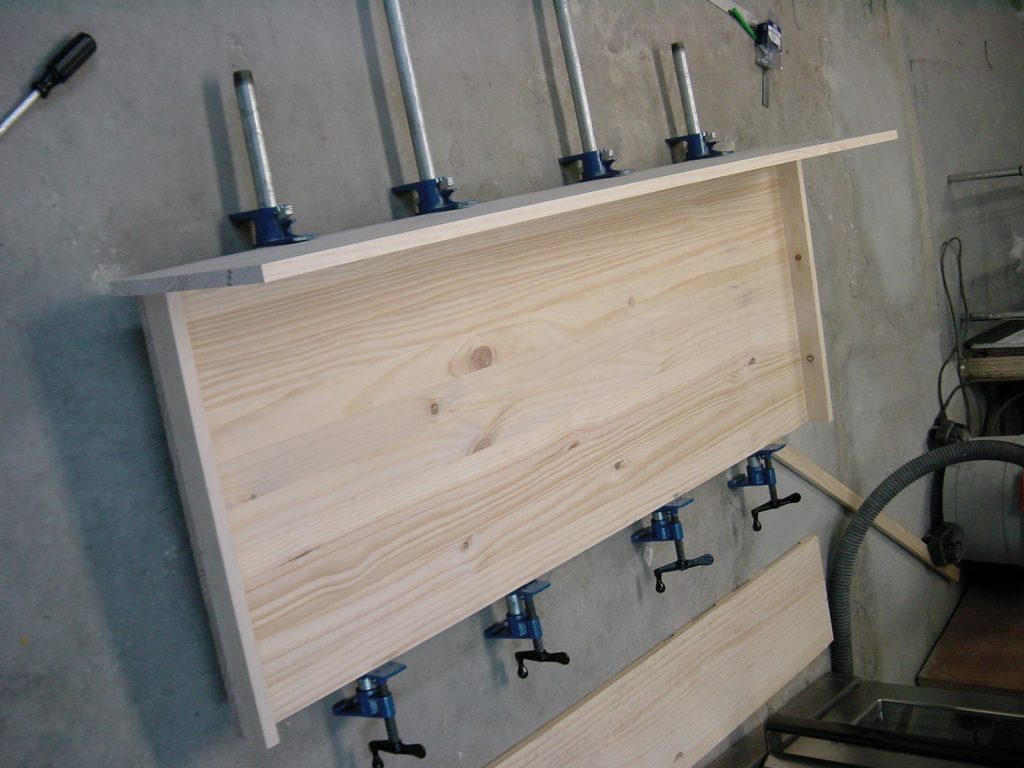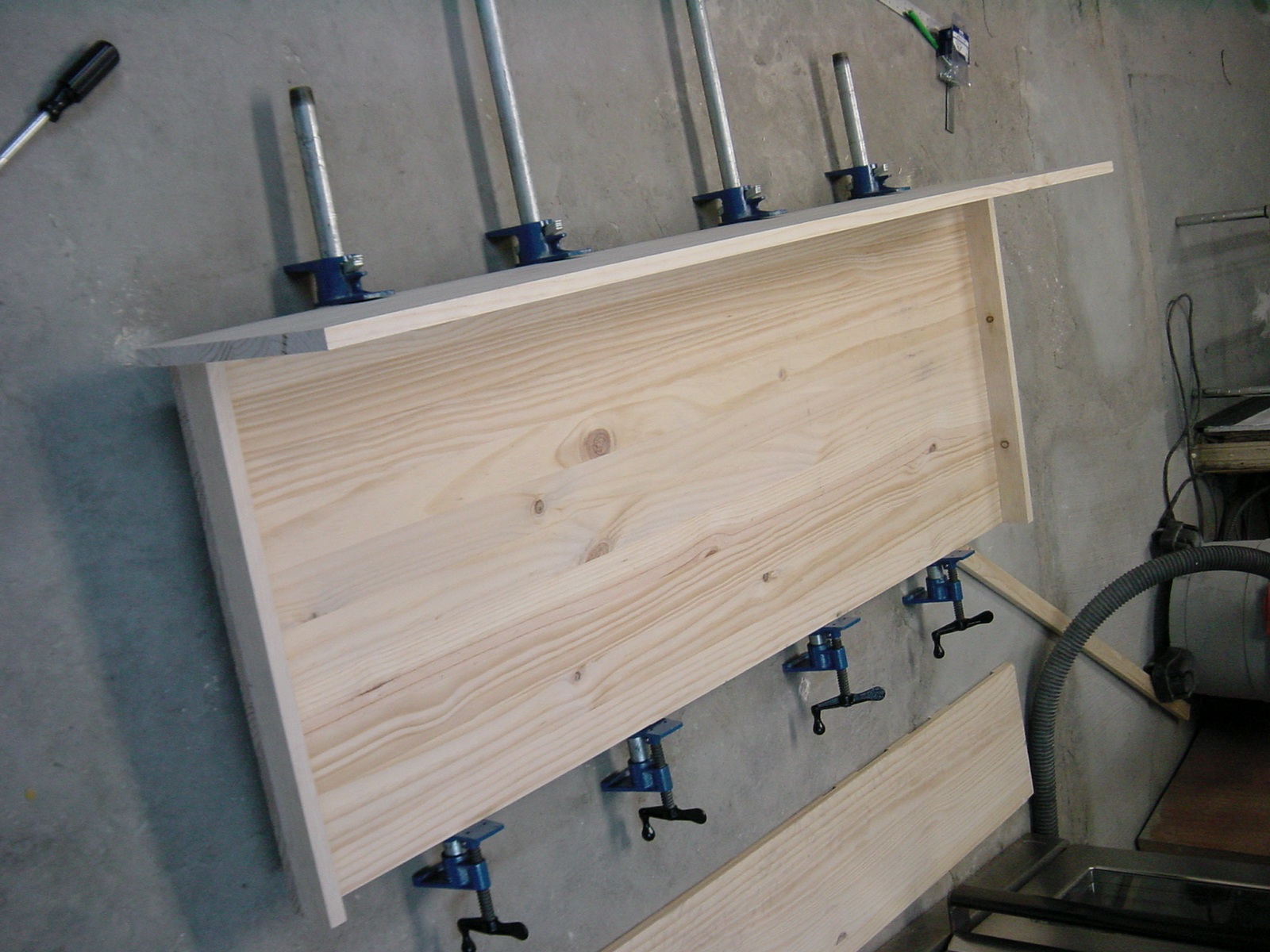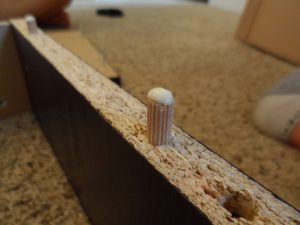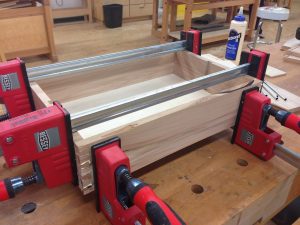Adhesives are critical to both woodworking and carpentry. While there are other means of fastening wood together and wood to a variety of other materials, adhesives are the “go to” in countless cases, even when used in conjunction with other forms of joining materials together, such as using fasteners. An understanding of the different types of adhesives available is an important part of any woodworker or carpenter’s tool kit.
There are a number of different names one hears when talking about adhesives used for wood. To the uninitiated, these may all seem to be more or less the same, when in reality they are quite different. Each is designed for a specific purpose and really doesn’t work properly when used outside the bound of that purpose. While there is some leeway, it is limited.
Of these various adhesives, two of the names most commonly heard are “Liquid nails” and “wood glue.” When talking about Liquid nails, we’re actually referring to a whole family of specially formulated construction adhesives, created for different purposes and normally sold in caulking tubes for easy application over large areas. Likewise, the term wood glue can mean a number of different types of adhesives, although this is not a brand name. Literally anything that is used to hold wood to wood is called a “wood glue” but the term most often is used to describe PVA adhesive (polyvinyl acetate). This is sold in bottles of various sizes.
Other than both of these terms referring to adhesives that are used with wood, there is little else in common between construction adhesive (Liquid nails) and wood glue (PVA). The question then becomes, which one is more applicable to the project at hand?
By and large, that question can be answered by looking at the type of project being built. I know of no instance where construction adhesives are used in the woodworking shop. This sort of adhesive is too thick to be used in most types of woodworking joinery, where properly shaped parts fit snugly together, without a gap. Gaps are a normal part of construction and construction adhesives must be formulated with the idea of bridging those gaps and bonding diverse materials together, even when they don’t fit snugly up against each other. While wood glue might be found on a construction site, it is pretty much only used for the construction of cabinetry.
PVA wood glue has little to no gap filling capability. It works by soaking into the pores of the wood, forming a permanent mechanical bond with the wood, the thin layer of glue that is between the two wood pieces acts merely as a bridge between that which has soaked into the pores on one piece of wood and that which has soaked into the pores on the other. When woodworkers need a glue with gap-filling capability, they switch over to epoxy, which has a higher solids content and has the tensile strength to bridge the gap, providing a strong bond. About the only time PVA is used with a gap is purely cosmetic, when sawdust is mixed into it to form a paste-like filler that matches the color of the wood.
Another time when epoxy might be used for woodworking is with difficult woods. Some woods are oily, resisting the adhesive, such as cocobolo, rosewood and purpleheart. In those cases, the oils need to be cleaned off the surface of the wood, either with mineral spirits, acetone or alcohol. It can also be useful to sand the surface with a medium grit sandpaper to provide the glue with a rougher textured surface to bond to. Finally, if the PVA glue doesn’t work, epoxy is the choice to use.
Construction adhesive, on the other hand, does not soak into the wood or any of the other materials it is used with, but rather bonds with the surface. Its strength is in the bond that it forms, as well as the tensile strength of the glue itself, when fully cured.
Of the two, construction adhesive is clearly the stronger; although wood glue is still stronger than the wood that it bonds with; making the joint in the wood generally stronger than the wood itself. Even in end-grain, which is considered to be the weakest glue joint in wood, it is typical for the wood fibers to separate before separating from the glue. standard PVA wood glue has an average strength of 3000 PSI, while the different formulations of Liquid nails have tensile strengths of 3,600 to 4,000 PSI.

While construction adhesive can be used to bond wood to wood, such as in the making of headers and beams, it is most often used for attaching other materials to the wood framing of a home. Liquid nails brand adhesives can be used for bonding aluminum, wood, steel, stone, drywall concrete, brick veneer, Styrofoam insulation and other materials. Because it does not depend on soaking into the pores of the material, it can be used effectively with both porous and non-porous materials, as well as rough surfaces, such as stone and concrete.
Both wood glue and Liquid nails can be used for indoor and outdoor applications; but in both cases, it is necessary to buy the formulation that is designed for exterior application. Titebond III wood glue is an exterior formulation as is Liquid nails Outdoor Repair adhesive. Interior formulation of either type of adhesive may work outdoors for a while, but they are not waterproof and so will eventually be damaged by water and fail.
Another important difference between the two is their working time and cure time. Wood glue has a five to fifteen minute working time, depending on the temperature and humidity. It will dry within 60 minutes, when properly clamped. Once dry, the glue requires 24 hours to fully cure. On the other hand, construction adhesives need a full 24 hours to dry and will not fully cure, reaching their full strength, for another six days.
Both types of adhesives need to be clamped while drying and curing, although this is often done in different ways. Projects built with wood glue are often clamped with an assortment of clamps found in the workshop, without the use of any fasteners. However, fasteners can be used in conjunction with it and often are in cases where the appearance of those fasteners will either be hidden or will not detract from the appearance of the finished project. Cabinetry, for example, is often glued and nailed with wire brads, which leave only a small hole that can be easily filled. But in fine furniture, those brads are not used. Clamping of construction adhesives is almost always accomplished with fasteners, either nails or some variant of drywall screw. The added benefit of using fasteners along with either of these adhesives is that the fasteners add strength to the joint, specifically helping it to withstand shear and pulling.
While these are the main differences in these two adhesives, from the working point of view, there are also some other differences which may affect the choice between the two. These are listed in the chart below:
| Characteristic | Liquid Nails | Wood Glue |
| Dry Time | 15 minutes | 15 to 60 minutes |
| Cure Time | 7 days | 24 hours |
| Strength (fully cured) | 3,600 to 4,000 PSI | 3,000 PSI |
| Shelf Life | Two years | One year |
| VOC Level | Low to high depending on formulation | Little to none |
| Safety | Can require following of safety protocols | Safe to use, indoors or out |
| Primary Use | Bonding most types of construction materials, especially where it is difficult to use fasteners | Bonding wood to wood. Can also be used to bond metal, plastic or porcelain to wood, although epoxy is better for these applications |
| Cleanup (from skin) | Oil or petroleum jelly | Water |
| Cost | $3 to $20 | $2 to $40 |




